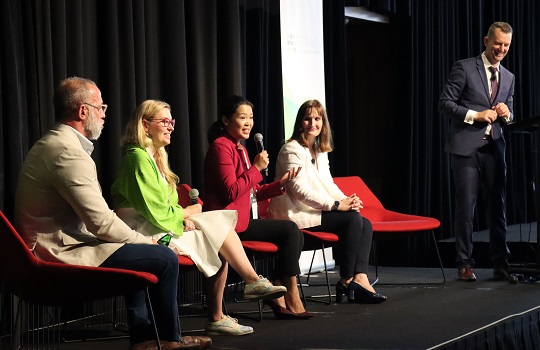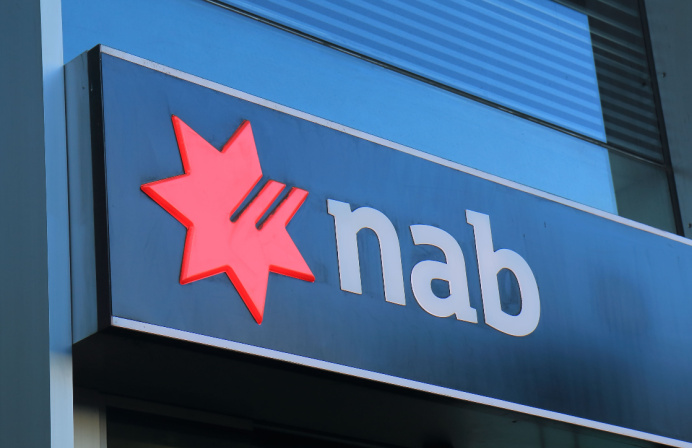
While the banking sector has been at the leading edge of enterprise digitalisation, fellow travellers in insurance still have considerable room to expand their digital transformation horizons.
Still battling legacy overhang, particularly in efforts to break free of the mainframe and break down stubborn data silos, insurers are at the same time discovering new operating models that present far more opportunities for growth and innovation of front-line services.
Speaking at FST’s Future of Insurance 2022 event, leaders from Australia’s insurance sector explored opportunities and challenges for today’s industry innovators, from efforts to address the tech talent shortage, the role of bigtechs, like Amazon, in the insurance market (particularly with the rise of ’embedded insurance’) to new, insurtech-inspired operating models re-defining what insurance can and should offer to customers.
We take a look at some of their key conversation points.
Featured speakers:
- Fiona Hayes-St Clair, Chief Strategy & Transformation Officer, QBE
- Suzi Leung, Chief Claims Officer, Life & Investments, Zurich Financial Services
- Tetiana George, Ex-Head of Claims, Strategy & Operations, Blue Zebra
- Michael Albrecht, Industry Lead – Insurance, Genesys
Moderated by Luke Hannan.
Hannon (Mod): With a frenzy of digital transformation, a prevailing talent crisis and the challenges from the ‘great resignation’, there’s considerable change afoot in the insurance sector right now. What do you anticipate the future of insurance will look like?
Hayes-St. Clair (QBE): We’ll pivot from a state of ‘frenzy’ around digital to it just being normal, because there’s no end to digital transformation; it’s something we continually need to be lifting the bar on.
The future of insurance, as I see it, is ‘bionic’. By this, I mean connecting digital with really empathetic, human, emotional experiences, because our role as insurers, as we’ve seen from the stories today, is to put people’s lives and businesses back together.
While digital can take the friction out of that, the magic is keeping the human in that as well.
Leung (Zurich): We also need to think about the impact of digital on our people. We’ll certainly be data-driven for our customers and, yes, make data-led decisions, but what does that mean for our employees, especially when we’ve had a few years now of lockdowns, of hybrid and remote working? That will definitely play a part in our organisational culture moving forward, and I’ll be interested to see how that plays out over the next couple of years.
George (Blue Zebra): I would dare to make an interesting association. I’m sure you’ve all heard of fast fashion, businesses like Zara releasing some 12 collections in a year and then killing the first collection once the new one arrives on shelves.
I think insurance has entered a similar cycle [to fast fashion].
Whilst we could live with a 200-year-old process before and not change it, the future is fast. And fast does not necessarily mean getting everything right – it’s in embracing ‘fail fast’ thinking, of ‘try again and do it right’.
Albrecht (Genesys): No doubt, digital is here to stay. We all acknowledge that it’s taking away mundane tasks from staff. It’s making it a little bit more exciting for the agent. It’s not going anywhere.
Hannon (Mod): What’s the Genesys perspective of digital transformation at the coalface? What are your clients sensing and feeling?
Albrecht (Genesys): At least out there in the market, there’s probably a low expectation when a customer engages with a contact centre, regardless of the industry. However, we’re seeing some great examples of exceptional experience. I heard a story earlier this week where a lady, having returned to her car after shopping, had noticed someone had run into her vehicle; they left their number, she then and there lodged her claim, and before you knew it, there was a tow truck picking up her car and delivering a hire car.
Customers still assume this process is going to be miserable, tedious and inconvenient.
Yet, all of a sudden, that whole customer experience has turned around to be relatively good and frictionless, without much wait and with the service they desired.
Hannon (Mod): And that, deploying a tilt truck and hire care, is a really fascinating example of using data wisely. It’s something simple, but with a significant customer impact.
Albrecht (Genesys): There’s a couple of organisations out there that have jumped in the middle, so when you do have an accident – notmyfault.com.au, for instance – they will come out and be that middleman to organise that, and at the end of the day there’s a claim against the insurance company. So, I’d say the insurance company is taking that step and taking that action themselves.
Hannon (Mod): Digital capabilities are proving a key differentiator today. Susie, your thoughts on customer expectations. Is it now a ticket to the game, simply getting it right?
Leung (Zurich): Definitely over the past couple of years. Speaking from personal experience, and I’m sure many people in the room are the same, you expect that you can do almost anything from your phone. When it comes to online shopping, for instance, I think, “If I have to get up and go get my credit card, I’m sorry, the deal’s off. That’s just all too hard.” It’s Apple Pay or nothing, right?
That, I think, is the expectation that people have these days: at their fingertips, they need to be able to connect with you, to be able to have answers to their questions, and to have a seamless transaction. And it has to happen almost instantly.
Their experience through retail and other business outside of insurance has just normalised things. As a financial services industry, we need to match those expectations now moving forward.
Hayes-St. Clair (QBE): I absolutely agree. And the interesting thing for us in insurance, it’s not often something that our customers engage with frequently. If we don’t consider what seamless means, if we don’t ask our customers what matters, we can destroy that experience. We can’t just make assumptions about what customers want to hear.
In some of our own research, we’ve been surprised about their responses to a ‘questionless quote’, which we assumed would be desirable for our customers.
But customers actually feel a bit anxious if they don’t think that they’ve been heard and their needs haven’t been understood.
What they want is for us to know them and say, ‘This is what we know about you. Therefore, this is what you think your cover is’. It’s important to just keep listening to customers.
Hannon (Mod): It is fascinating that customers, with the duty of disclosure, are so used to filling out a bunch of questions.
Hayes-St. Clair (QBE): And there’s comfort in that. It’s fascinating!
Hannon (Mod): Pivoting slightly to concerns around the talent shortage. How is the industry’s digital transformation goal progressing when we consider how challenging it has been to get people?
Hayes-St. Clair (QBE): For the 20 years that I’ve been involved in the insurance industry, we’ve been talking about a talent shortage. It’s different this time because it’s more pervasive in Australia and across the world, around data, digital, customer and transformation skills. Part of it is, how do we build the skills of all our people to be more business technologists, citizen coders, and those other key pieces?
The other intriguing thing about insurance is that you often hear the story that people just ‘fell’ into insurance. Suddenly they’re here and they love it, because we’ve got a really great purpose, great cultures, and really interesting gnarly problems to solve. How amazing would it be if people could actually seek out insurance as somewhere to go?
Looking at strategies for building early talent is really important, getting those pathways from universities. We welcomed our 2022 cohort of grads to QBE a couple of weeks ago in the office – which was amazing to see them in person. The other piece is, how do we talk about our purpose? Because we know that people want to do more than just show up for a paycheque – they want to have meaning.
As an industry, we bring great meaning and help to communities and customers every day. We could certainly do more to bring that to life [for our staff].
Leung (Zurich): When it comes to talent, digital comes into the equation from two perspectives. One is that the language of graduates and the cohorts coming through today is technology and digital. I’ve got young children who are already coding in kindergarten. It’s not even the way of the future. It’s here now! We need to be ready for those generations as they come through and start to join the workforce and whatnot.
The second part is user experience.
Can you imagine, as an employer, bringing in all these young millennials and people who’ve been coding since they were 12, creating these amazing things on Minecraft and Roblox, into a staid insurance organisation with multiple platforms, multiple logins, and things that don’t sync up? It’s just so unmotivating for them.
It’s really important for insurers or any organisation to be looking at technology from a customer perspective, from a business decision perspective, but also very much from an employee experience perspective as well. What was acceptable or tolerable before – and no one enjoys multiple plugins or platforms – will not be tolerable in the future.
George (Blue Zebra): I must say, I did not start my career in insurance directly. My career began at the Boston Consulting Group in Switzerland. And the things we did to attract talent – I’ve not seen any insurance company doing the same. We had bobsleigh weekends in the Alps, parties and competitions. We were even going to schools and running business competitions with 12-year-olds.
Get them while they’re young, get them motivated and interested, because that’s your best chance of winning the war for talent. I’m a bit disappointed that at least the larger insurers are not really out there and fighting for the best.
Hannon (Mod): We began to scratch the surface a bit touching on legacy platforms and legacy thinking, but what are some of the major challenges in shifting the insurance industry to a data-first mindset?
Leung (Zurich): Listening to the speaker from MicroStrategy’s points earlier, that really resonated with me. He raised a question of whether people who need data when they have questions, can they in fact access it? We really need to make data more accessible.
We also need to make it more digestible – doing away with big spreadsheets and presenting data in a way where people can see and understand exactly what it is and the story it’s trying to tell us.
Thirdly, we need integrity attached to it; it absolutely needs to be accurate to make those key decisions. It’s also maturity and bringing people on the journey to understand the importance of the data behind us. Organisations are really starting to say, ‘Wow, that’s a gold mine right there that we can use to shape products, shape customer experiences, shape business decisions and strategy – how do we tap into that?
And the challenge of legacy definitely comes into it. I’m working for an organisation that’s turning 150 this year. We’re working across multiple legacy platforms and systems. We also have all these acquired companies that we’re integrating into our business that have their own platforms. It used to be just about budget, but now it’s also about resources. The talent shortage has been huge, which has left us hamstrung.
Hayes-St. Clair (QBE): And we’re 140 years old, almost, so we’re in a very similar situation, so we have a lot of empathy there. It’s curious, because insurance companies have always needed a lot of data, have always used a lot of data and analytics. Yet, its those cultural difference that still challenge us.
Historically, that data and insight has been very siloed, attached to a specific role or challenged by an organisational power structure of ‘I know this bit. You don’t know this bit’. This has meant we’ve had data trapped in the claims function, the underwriting function, pr the sales function. It’s easy to say, ‘Let’s democratise data and analytics!’. But there’s also a really important cultural shift that needs to go along with that.
Hannon (Mod): How can we work on improving the transition from physical contact centre sales through to digital insurance sales?
George (Blue Zebra): This is a slightly complicated answer, especially in the Australian context. If we’re talking about direct sales or intermediated sales, the answer’s going to be different. I find the Australian market particularly driven very strongly via intermediated channels.
At my previous employer, the mantra was, ‘Nobody’s servicing the brokers. Let’s get the broker’s great technology, let them service their customers with the help of digital tools while keeping a live conversation going’. Now, it’s often a good idea to go direct to customers. However, it’s a really, really big challenge.
Consider you go to a supermarket to buy milk and there’s a 76 pages product description. You’d be very confused, regardless of whether it’s in-person or digital. I know a lot of companies are trying to make those comparisons and details easier.
However – and please treat it as my controversial opinion – the Australian insurance market is not made to be easily comparable. That’s a massive, massive obstacle.
That’s why you have so many in-person conversations needed, because people just don’t understand the product they’re buying, its value, when to claim, and what to do with it.
Hayes-St. Clair (QBE): We’ve also tried to put products that were designed for a conversation and made them digital, rather than designing them from the ground up. We did some work over the last couple of years to completely rethink our home and motor policies with digital-first in mind. And that was really quite freeing, but also a lot of hard work to consider that, if we want to design first for digital rather than try and jam a legacy product and a legacy conversation, it’s really important to design with that channel in mind.
Albrecht (Genesys): We’re seeing a lot of the traditional bricks and mortar and digital services being blended. For instance, let’s take that branch and create a kiosk environment, introduce some digital, but still allow for a fallback, with a person there if we need.
The industry is still very touchy-feely. We’ve got floods going on at the moment; consumers feel more comfortable talking to somebody, knowing their claim has been processed correctly.
Hannon (Mod): Looking to non-industry partnerships, do you see regulation evolving to enable us to sell insurance through, for example, Amazon? And, moreover, do we actually want that ability?
George (Blue Zebra): A huge concept right now is embedded insurance. They might not sell protection or life insurance, but for absolutely everything else, Amazon’s already there. The reality is there. Do you want to insure your house through Amazon? That’s a different question. But in short, anything else which is smaller, yes, it’s already happening.
Hayes-St. Clair (QBE): It’s driven by the customer. If the customer trusts that platform and wants to do that, that’s where insurance will go.
Leung (Zurich): Like you see with Woolworths, supermarket chains have also branched out into insurance, particularly for smaller things. I got a pet recently, and looking into pet insurance, Woolworths popped up as one of the more predominant ones, which I found really interesting. It’s certainly about brand awareness; Woolworths is a trusted brand for certain people and a logical leap for them. But being fit for purpose, though, as Tetiana [George] said, ‘Would you insure your yacht with Amazon? Or your home or life? Probably not. But when it comes to perhaps a drone that you’re purchasing on Amazon, and that was one of the things that came up when you were checking out, maybe you would.
Albrecht (Genesys): They’re obviously leveraging their base, which is huge. The benefit for the traditional players like Allianz, Zurich and QBE and so on is that this is their domain. They play in that lane and that lane only. If you really want to insure those personal items, then I think most people will still go with those brands – as long as they’re keeping up with the times.
Hannon (Mod): A ripper of a question. Is the future of insurance to redefine what insurance means in the future for the customer?
Hayes-St. Clair (QBE): I’ll talk to a joint venture we have in QBE with safety culture, a company called Mitti that we started in 2020. The whole premise of Mitti was to enable customers to get value for their insurance even when they don’t claim. So, how do we use those 600 million safety checks conducted every year through the [iAuditor] app and combine that with almost 140 years of QBE claim data to help businesses predict, protect and mitigate the risk? That could be an answer to the future of insurance, because customers actually don’t buy insurance and engage in it to get an insurance contract. They do that to feel protected. Opening up new ways that we can do offers fascinating possibilities.
George (Blue Zebra): I’ve worked in more than 20 countries in insurance, and the future is already here – in a way. There are so many different models that exist. As Fiona was saying, one model is, Get me some benefits even without a claim. Another is, I don’t even know I have insurance, which follows the concept of embedded insurance. The best example of that is currently in China with insurtech Zhong An. The way you interact with your phone, everything is embedded within a single ‘super app’, which includes insurance for any number of things – for instance, flight delay insurance. You don’t even need to claim; you get money automatically, and a lot of people don’t even know they were insured. A lot of these things are already happening.
Albrecht (Genesys): Some insurance companies that we’re working with are really keen to promote what’s included in their policies. They’re showing value because the reality is, some customers, as Tetiana said, are not aware that they’ve got the policy, they’re maybe not utilising it to the best of what it offers. I know insurers want to promote what that policy contains.
*This is an edited extract from the Reimagining the Future of Insurance panel discussion at FST’s Future of Insurance 2022 event.





